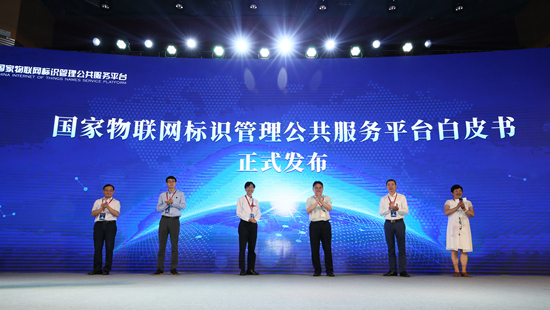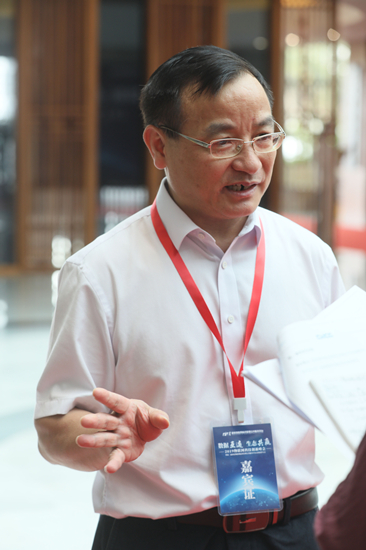IoT industrial cluster gathers in Nansha
The 2019 IoT Technology Innovation Summit focusing on the construction of the national Internet of Things (IoT) identity management public service platform was held in Guangzhou’s Nansha district.

The guests welcome the release of The White Paper on the National Internet of Things Identity Management Public Service Platform (2019)[Photo by Li Xiatong/gznsnews.com.cn]
The White Paper on the National Internet of Things Identity Management Public Service Platform (2019) was released at the summit. The national IoT logo management public service platform's node is set in Nansha. The current IoT logo registration volume exceeds 72.9 billion, and the cumulative number of identification services exceeds 8.8 billion.
In the IoT era, types of data are connected through identification. The IoT identification systems applicable in different industry fields are not the same. To achieve data sharing and join the information islands, a unified identification and management platform is needed.
That joining is the important role played by the National Identity Platform in the development of the IoT industry.

Xiao Yun introduces National Identity Platform functions.[Photo by Li Xiatong/gznsnews.com.cn]
"As the only public service platform for the IoT logo, it has achieved compatibility with various mainstream identification and coding systems such as Ecode, Handle, EPC and OID," said Xiao Yun, director of Computer Network Information Center of Chinese Academy of Sciences.
At the beginning of this year, the paltform’s core technology, unification of heterogeneous identification service technology, was granted a US patent.
The one formally established M2M international standard has been recognized by a national invention patent.
This is also a major breakthrough in China's independent intellectual property rights technology in the IoT field.
The platform has been the partner of 10 enterprises, covering jewelry, printing and packaging industries in Shanghai, Chengdu, Fuzhou and other regions, and will support the implementation of IoT application construction.
It has built six root nodes in Guangzhou, Dongguan, Beijing, Chengdu, Changchun and Nanjing now, and has completed application demonstrations of identity-based services through smart cities, data sharing, smart agriculture, industrial Internet of Things and other fields.
The main node of the platform is located in Nansha, Guangzhou.
"At the level of IoT technology facility deployment, Nansha has achieved coverage of low-power networks. At the application system level, we are promoting the development and application of cross-border commodity information big data service platform in the district," said Xiao.
"Data such as production and circulation, inspection and quarantine of cross-border goods are scattered in different departments such as customs and market supervision," he noted.
"Through the national identity identification platform, the integration and connectivity of these heterogeneous data can be realized. Based on this, accurate big data analysis around users, production, quality traceability and other requirements will provide a decision-making basis for government departments and enterprises," he added.
The National Identity Platform will build a Science and Technology Center in the Guangdong-Hong Kong-Macao Greater Bay Area, and accelerate the promotion of a cross-border commodity information big data service platform.
Nansha has become the center of global IoT and established an open and win-win ecosystem.
More than 500 guests such as Yin Yulong and other experts from the Chinese Academy of Engineering and players of the IoT industry were invited.
All rights reserved. Presented by China Daily










